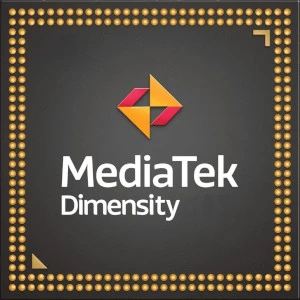MediaTek Dimensity 920 vs Unisoc Tanggula T760 5G
The Unisoc Tanggula T760 5G and the MediaTek Dimensity 920 are two processors with unique specifications.
Beginning with the Tanggula T760 5G, it is built with an architecture that consists of 4 Cortex-A76 cores clocked at 2.2 GHz and 4 Cortex-A55 cores clocked at 1.8 GHz. This octa-core processor runs on the ARMv8.2-A instruction set and has a lithography of 6 nm. With a low TDP of just 5 Watts, it ensures efficient power consumption. Additionally, it also features a Neural Processing Unit (NPU) for enhanced AI capabilities.
On the other hand, the Dimensity 920 by MediaTek sports a slightly different architecture. It consists of 2 Cortex-A78 cores clocked at 2.5 GHz and 6 Cortex-A55 cores clocked at 2.0 GHz. Like the Tanggula T760 5G, it operates on the ARMv8.2-A instruction set and has a 6 nm lithography. However, its TDP is slightly higher at 10 Watts. Similar to the Tanggula T760 5G, it also incorporates an NPU for advanced AI functionality.
Comparing the two processors, it is evident that both offer the same number of cores (8) and instruction set (ARMv8.2-A), as well as a 6 nm lithography. However, there are differences in their core configurations and power consumption. The Tanggula T760 5G has a more efficient setup with 4 Cortex-A76 cores and a TDP of 5 Watts, while the Dimensity 920 has 2 Cortex-A78 cores and a TDP of 10 Watts.
In conclusion, while both processors have their strengths, the Tanggula T760 5G may be a more attractive option for those seeking better power efficiency, thanks to its lower TDP and balanced core configuration. However, the Dimensity 920 might provide better performance in certain tasks with its higher clock speed on the Cortex-A78 cores. Ultimately, the choice between these processors depends on the specific needs and priorities of the user.
Beginning with the Tanggula T760 5G, it is built with an architecture that consists of 4 Cortex-A76 cores clocked at 2.2 GHz and 4 Cortex-A55 cores clocked at 1.8 GHz. This octa-core processor runs on the ARMv8.2-A instruction set and has a lithography of 6 nm. With a low TDP of just 5 Watts, it ensures efficient power consumption. Additionally, it also features a Neural Processing Unit (NPU) for enhanced AI capabilities.
On the other hand, the Dimensity 920 by MediaTek sports a slightly different architecture. It consists of 2 Cortex-A78 cores clocked at 2.5 GHz and 6 Cortex-A55 cores clocked at 2.0 GHz. Like the Tanggula T760 5G, it operates on the ARMv8.2-A instruction set and has a 6 nm lithography. However, its TDP is slightly higher at 10 Watts. Similar to the Tanggula T760 5G, it also incorporates an NPU for advanced AI functionality.
Comparing the two processors, it is evident that both offer the same number of cores (8) and instruction set (ARMv8.2-A), as well as a 6 nm lithography. However, there are differences in their core configurations and power consumption. The Tanggula T760 5G has a more efficient setup with 4 Cortex-A76 cores and a TDP of 5 Watts, while the Dimensity 920 has 2 Cortex-A78 cores and a TDP of 10 Watts.
In conclusion, while both processors have their strengths, the Tanggula T760 5G may be a more attractive option for those seeking better power efficiency, thanks to its lower TDP and balanced core configuration. However, the Dimensity 920 might provide better performance in certain tasks with its higher clock speed on the Cortex-A78 cores. Ultimately, the choice between these processors depends on the specific needs and priorities of the user.
AnTuTu 10
Total Score
GeekBench 6 Single-Core
Score
GeekBench 6 Multi-Core
Score
CPU cores and architecture
| Architecture | 2x 2.5 GHz – Cortex-A78 6x 2.0 GHz – Cortex-A55 |
4x 2.2 GHz – Cortex-A76 4x 1.8 GHz – Cortex-A55 |
| Number of cores | 8 | 8 |
| Instruction Set | ARMv8.2-A | ARMv8.2-A |
| Lithography | 6 nm | 6 nm |
| TDP | 10 Watt | 5 Watt |
| Neural Processing | NPU | NPU |
Memory (RAM)
| Max amount | up to 16 GB | up to 16 GB |
| Memory type | LPDDR5 | LPDDR4X |
| Memory frequency | 3200 MHz | 2133 MHz |
| Memory-bus | 4x16 bit | 4x16 bit |
Storage
| Storage specification | UFS 3.1 | UFS 3.1 |
Graphics
| GPU name | Mali-G68 MP4 | Mali-G57 MP6 |
| GPU Architecture | Mali Valhall | Mali Valhall |
| GPU frequency | 950 MHz | 850 MHz |
| Execution units | 4 | 6 |
| Shaders | 96 | 96 |
| DirectX | 12 | 12 |
| OpenCL API | 2.0 | 2.1 |
| OpenGL API | ES 3.2 | ES 3.2 |
| Vulkan API | 1.2 | 1.2 |
Camera, Video, Display
| Max screen resolution | 2520x1080@120Hz | 2160x1080 |
| Max camera resolution | 1x 108MP, 2x 20MP | 1x 64MP, 2x 24MP |
| Max Video Capture | 4K@30fps | FullHD@30fps |
| Video codec support | H.264 (AVC) H.265 (HEVC) VP9 |
H.264 (AVC) H.265 (HEVC) |
Wireless
| 4G network | Yes | Yes |
| 5G network | Yes | Yes |
| Peak Download Speed | 2.77 Gbps | 2.7 Gbps |
| Peak Upload Speed | 1.2 Gbps | 1.5 Gbps |
| Wi-Fi | 6 (802.11ax) | 5 (802.11ac) |
| Bluetooth | 5.2 | 5.0 |
| Satellite navigation | BeiDou GPS Galileo GLONASS NavIC QZSS |
BeiDou GPS Galileo GLONASS |
Supplemental Information
| Launch Date | 2021 Quarter 3 | 2021 February |
| Partnumber | MT6877T | T760 |
| Vertical Segment | Mobiles | Mobiles |
| Positioning | Mid-end | Mid-end |
Popular comparisons:
1
Qualcomm Snapdragon 8s Gen 4 vs Qualcomm Snapdragon 6 Gen 3
2
MediaTek Helio G99 vs MediaTek Helio G88
3
MediaTek Dimensity 930 vs Qualcomm Snapdragon 7 Plus Gen 3
4
Apple A16 Bionic vs HiSilicon Kirin 970
5
Unisoc Tiger T710 vs MediaTek Helio A22
6
Apple M1 (iPad) vs MediaTek Dimensity 6080
7
Qualcomm Snapdragon 4s Gen 2 vs Qualcomm Snapdragon 680
8
HiSilicon Kirin 9010 vs MediaTek Dimensity 1300
9
MediaTek Dimensity 8350 vs Qualcomm Snapdragon 835
10
MediaTek Dimensity 8200 vs MediaTek Dimensity 1100

